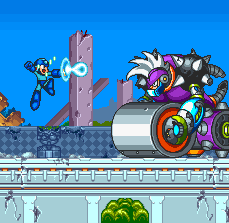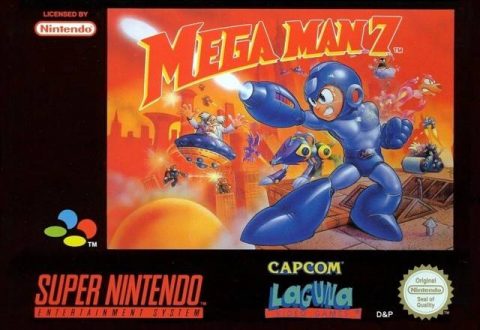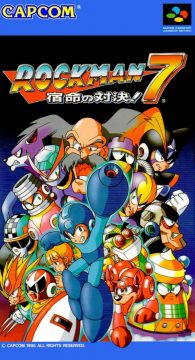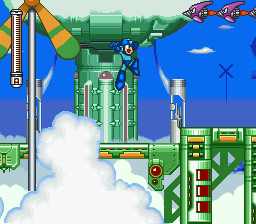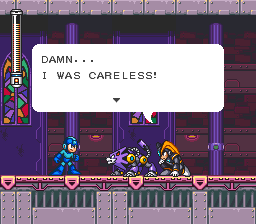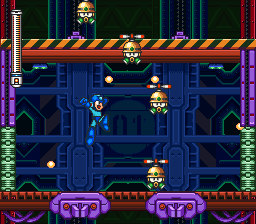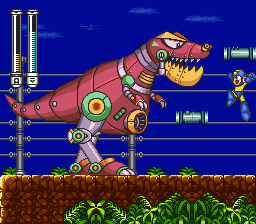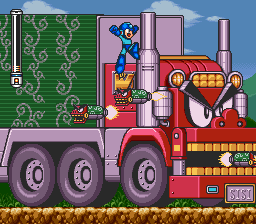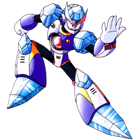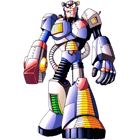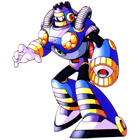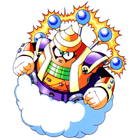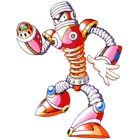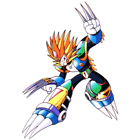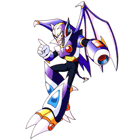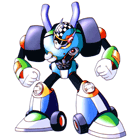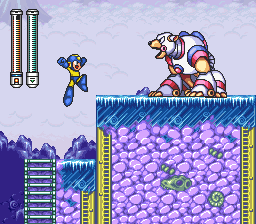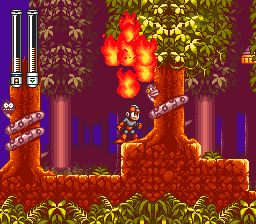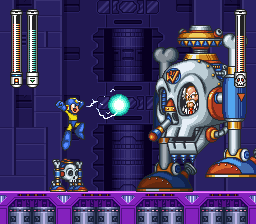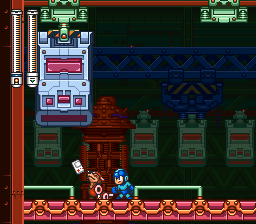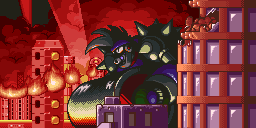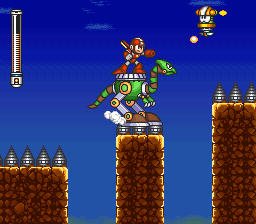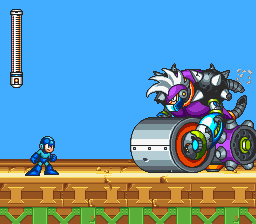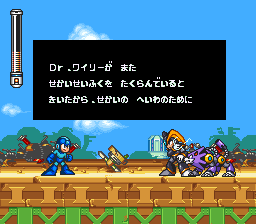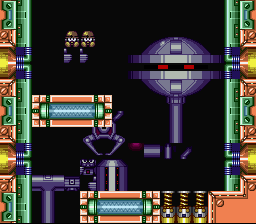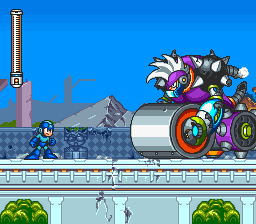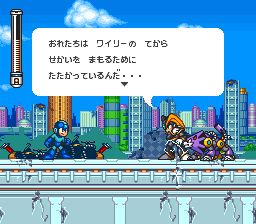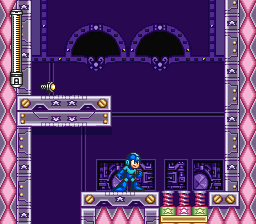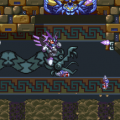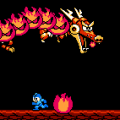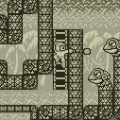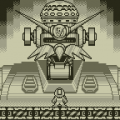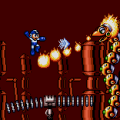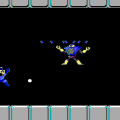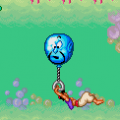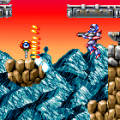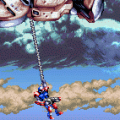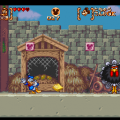- Mega Man (Series Introduction)
- Mega Man
- Mega Man 2
- Mega Man 3
- Mega Man 4
- Mega Man 5
- Mega Man 6
- Mega Man 7
- Mega Man 8
- Mega Man & Bass
- Mega Man 9
- Mega Man 10
- Mega Man 11
- Mega Man: Dr. Wily’s Revenge
- Mega Man II (Game Boy)
- Mega Man III (Game Boy)
- Mega Man IV (Game Boy)
- Mega Man V (Game Boy)
- Mega Man: The Wily Wars
- Mega Man (Game Gear)
- Rockman Complete Works
- Mega Man Anniversary Collection
- Mega Man 3 (DOS)
- Mega Man (DOS)
- Mega Man: Powered Up
- Super Adventure Rockman
- Wily & Right no RockBoard: That’s Paradise
- Mega Man Soccer
- Mega Man: The Power Battle
- Mega Man 2: The Power Fighters
- Rockman: Battle & Fighters
- Mega Man Battle & Chase
- Street Fighter x Mega Man
- Mega Man Tiger LCD Games
- Rockman & Forte (WonderSwan)
- Rockman’s IQ Challenge/Rockman Gold Empire/Rockman Strategy
- Mega Man Mobile Games / Panic Shot! Rockman
- Mega Man Unreleased Games
It’s hard to believe how long it took Capcom to move the classic series to another, more-powerful platform. Arriving after nearly a year-and-a-half after the spin-off Mega Man X hit Japanese store shelves, the seventh classic installment was released with little notice.
The game takes place six months after the end of Mega Man 6, and Wily is still imprisoned for his crimes. However, the bad doctor left a contingency plan to be executed should he be out of commission: a secret lab housing four Robot Masters, set to boot up and search for him should a routine signal cease to be submitted. Sure enough, the start of the game has calamity all over the city as mad bots rampage in the streets, leading to an explosive jailbreak in the distance. For the first time since Mega Man 2, Dr. Wily is revealed as the villain from the get-go, with no double-crossing or red herring in the way. This time, the fairly obvious villain reveal is reserved for Bass and Treble, who mysteriously arrive to spar with Mega Man and later break in to steal the latest upgrade Dr. Light was finishing up.
The first 16-bit classic Mega Man drew in design aspects from the X series and the Game Boy releases, starting things off with an introductionary stage with a huge, imposing, but easily disposed of starter boss, before offering only 4 stages to select from the outset. The added cartridge memory allows for much more text and acted-out cutscenes to fill out the story moments and to provide tips in key places. As another take from the portable games, Mega Man 7 marks the console debut of a shop, available from the stage select screen to purchase power ups and refill tanks with bolts collected from scrapped enemies.
The beefier tech of the Super Nintendo led to bigger sprites for all characters and enemy robots, allowing for more expressive animation, down to mouths flapping during text speech. When enemies are blown to pieces, gears and parts fly all over the screen. There are little added touches, like comically charred snakes blinking with rising smoke after a Scorch Wheel attack, or Truck Joe turning his head and leaning his arm on the back of his seat when he backs up his spiked dozer. Many of these humorous bits with the enemies are not seen again in the more technically capable 32-bit sequel a year later.
Unfortunately the bigger sprites (Mega Man included) use up more screen space, leading to a cramped feel compared to the previous NES titles. This is made worse by the slight dip in vertical resolution. The aesthetics lean toward a kiddy style as well, especially in contrast to the darker Mega Man X games. While the classic series is targeted to all ages as a whole, the youth-friendly tone was far more muted in limited 8-bit form, especially music-wise due to the PSG limitations. As such the more obvious childish undertones are made more obvious, which must have seemed like a step back to teenagers who’ve already had a taste of the more intense 16-bit Mega flavor.
Robot Masters
DWN-049 Freeze Man
He spends a lot of his free time coming up with cool poses, as his introduction clearly shows him nailing one. Using the air around him, he’s able to split the temperature to power himself with the hot air and fuel his Freeze Cracker with the cold air. He’s not a foe to be taken lightly – it is hard to jump over him as he runs around and drops icicles down from the ceiling after freezing the floor. [Weakness: Junk Shield]
DWN-050 Junk Man
Cobbled from scattered metal scraps which are held together by an internal electromagnetic force, he chucks chunks of his namesake at Mega Man with his huge claw hand, and protects himself in a swirling Junk Shield. If he looks like a robotic Frankenstein’s Monster, it’s because of the original submitted sketches referring to him as Franken Man. [Weakness: Thunder Bolt]
DWN-051 Burst Man
An oddly designed chemical plant security guard that’s filled with liquid soap and explosives. He’s simply aggravating rather than a serious threat, since he loves dropping a ton of bombs on the floor after receiving a major hit, and traps Mega Man in his Danger Wrap blown from the bubble wand on his head. [Weakness: Scorch Wheel; Freeze Cracker]
DWN-052 Cloud Man
A weather control bot stolen by Wily to be weaponized. Based on the mythical Japanese thunder god Raijin, he sends down Thunder Bolts to zap Mega Man – when he’s not being comically beaten senseless by his Achilles’ heel. Wily never could fix that stunlock problem with many of his robots… [Weakness: Danger Wrap]
DWN-053 Spring Man
This got past Dr. Wily’s drawing board? Where’s Coily the Spring Sprite to wish this bot away? But seriously, his only attacks are bouncing high to launch his sproingy fists or sending bouncing spiked Wild Coils. The only way he can be a threat is when he is hit by a Thunder Bolt, which temporarily magnetizes him and makes Mega Man gravitate towards him for collision damage. [Weakness: Slash Claw]
DWN-054 Slash Man
Based off the Stardroid Pluto from the Game Boy Mega Man V (in the game’s storyline, that is), this feral Wolverine/Sabertooth knockoff slices through forests with his Slash Claws to make room for more secret bases for his mad doctor master. He also has an army of robot dinosaurs under his wing. He’s one of the cheapest boss fights since he’s fast, stays on the walls and hidden in the ceiling, from where he drops sticky red goo. His original submitted contest name was “Claw Man”. [Weakness: Freeze Cracker]
DWN-055 Shade Man
A vampire robot that used to work in an amusement park’s haunted house as part of the attraction. Those bat wings aren’t just for show, though. He loves to hide up in the dim ceiling to swoop down and suck the oil from Mega Man to regain health. His sonic Noise Crush gets stronger if the caster catches the reverberation that bounces off walls. The music in his stage can be changed to the Ghosts ‘N Goblins theme by holding a button combination before selecting it. [Weakness: Wild Coil]
DWN-056 Turbo Man
An evil Transformer-like Robot Master that turns into a dragrace racecar. He has a high-end sound system installed and can peel out a spinning Scorch Wheel to blaze through his competition. Battle & Chase lists him as the previous champion of the circuit race. [Weakness: Noise Crush]
Mega Man 7 is one of the more puzzle-heavy games of the classic series. Many of the special boss weapons have interactive properties and abilities within the stages. Molten steel and weather bots can be frozen, generators zapped to life, candles lit, and so on. The new Rush Search allows Mega Man’s pal to dig and scrounge for items or hidden powerups, but he usually finds junk (or a Game Boy). Rush will bark if he stumbles onto something big, or point toward hidden passageways, which makes the ability quite helpful, even though limited via weapon energy. The major add-ons to Mega Man’s powers are very hard to find though, but at least they can be alternatively purchased at Auto’s store – for a hefty charge. Search and interact carefully and you can find a special bolt for Auto that slices shop costs in half. Diligent players can find Proto Man in various areas, who will give some hint or tip like how to find Beat captured in a cage. After enough encounters, Proto Man will spar with Mega Man to see if he’s strong enough. His battle here is no slouch, unlike the fights in Mega Man 3, but winning earns Proto Man’s respect and his shield, which is very useful for blocking standard projectiles. Along with the newly merged and tweaked Rush Adaptor suit to collect, there’s tons to see and do in this game. There’s even a secret fighting mode available via a special password, though it only has Mega Man and Bass selectable.
The difficulty of the game has been ramped up compared to the last two cakewalk outings. This isn’t so much due to balancing but rather in large part to the beefier sprites making every enemy and roadblock a big obstacle to the huge target that is Mega Man. At least his attacks and thankfully useful special weapons hit back just as hard, and can stun away some of the most annoying attack patterns of the Robot Masters. Make no mistake though, as everything being upscaled means little room to mess up, especially from instant death spikes or crushing obstacles. The battle with Wily’s UFO is marked as the toughest in the entire series, with even the devs and playtesters confessing to be unable to defeat him without using at least one E-Tank. The doctor appears in the air, launching hard-hitting, homing elemental balls of death and is naturally weak to the most convoluted and difficult to fire weapon in the arsenal, the Wild Coil (tip: hold up to make them spring higher). At least Meg Man can stock up at Auto’s between rounds, though that means fighting the Robot Masters again, as well. Double points go to his battle theme being super-rockin’ too! Listen to those metal guitar riffs!
The International versions of the game removed a little bit of content. Each Robot Master stage intro in the Japanese version had a little descriptive subtitle like “Jurassic Jungle” for Slash Man or a warning like “Don’t Slip!” for Freeze Man, which were cut out. A bigger loss was the humorous special weapon dialogue that randomly appeared after beating each level. In Japan, rather than the normal tips and functionality of the earned Robot Master weapon between Mega Man and Dr. Light, Mega Man might chat with with Roll finding a use for the weapon around the lab for cooking and cleaning, or have Auto mistake the weapon for something pun related, even name-dropping Strider Hiryuu when mentioning the Slash Claw. The biggest, most controversial change when the game came overseas is in the ending, when Mega Man points his buster at the mad doctor, who is bowing for forgiveness.
When Wily cites Asimov’s law of robotics about harming humans, Mega Man obediently freezes in Japan, speaking only in ellipses. In the West, the Blue Bomber instead declares that he is more than a mere robot and wishes death upon Wily, going against his usual moral justice and desire for peace. This odd, rapid tonal shift clashes with the game’s otherwise light-hearted, kid-friendly approach and was possibly to make Mega Man a little more edgier for US teens. In either case, it’s a one-time affair and no attempt of making the hero a vigilante killer ever came up again.
A prototype cart for Mega Man 7 emerged and was dumped online. This early build of the game sports many backgrounds and other elements that were improved or changed before the product was finished. The intro stage, Shade Man, and Spring Man sport varying different designs for the stages, though it’s questionable whether the bright pink look for Spring Man was a better choice. Beat’s ability to pluck Mega Man from pits also ran on standard energy rather than the purchased charges in the final game.
The game, unlike the previous six and even the later games, didn’t get many re-releases, not even a digital port on Virtual Console or similar service as of yet. The only way to play the game legitimately outside of the original SNES cart is on the Anniversary Collection, which has emulation issues that cause slowdown and sound errors. It also removes the Mode 7-heavy ending scene. This is a rather large problem for any fan wishing to legally play the game as it was meant to be, since Capcom had scaled back the manufacturing of SNES carts due to projected sales numbers, making Mega Man 7 (like Mega Man X3 from the same year) a rare cart with inflated prices on the secondhand market.
Comparison Screenshots
